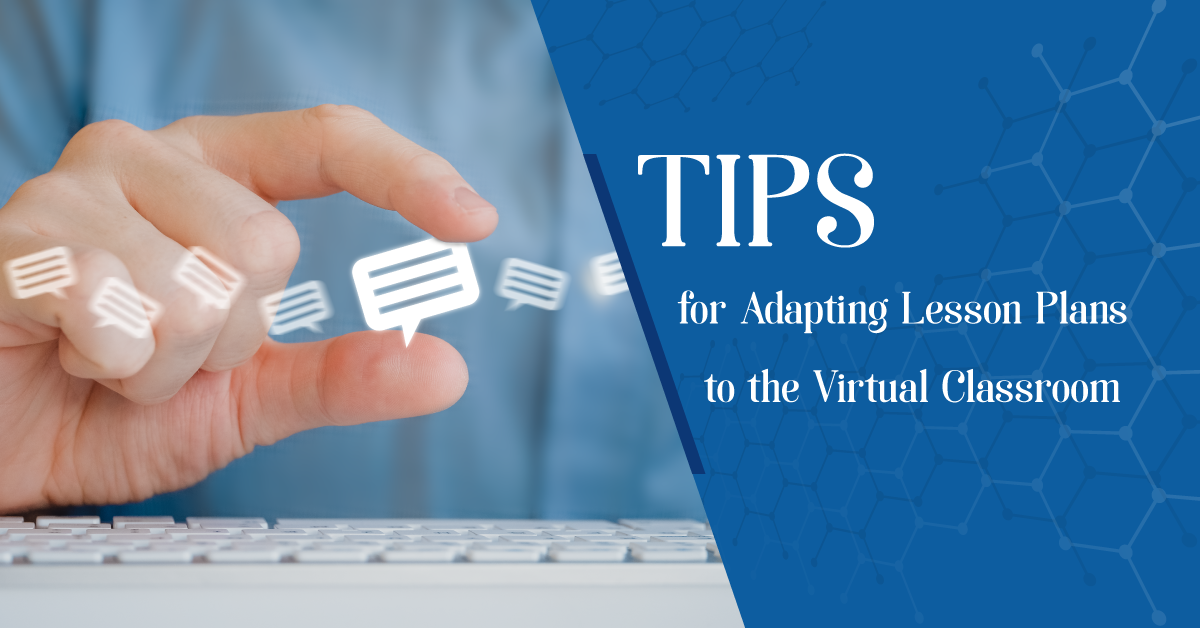Separating School Life and Home Life
Working from home has become the new normal for many of us, and with it comes new challenges. The line between home life and school life has become increasingly blurred with distance learning. It can be hard to get into “school mode” when we can’t remember what day of the week it is. Read on for ten tips to help you balance home life and school life.
1. Create the mood. Establish a workspace that will help you get into the “school” mindset every time you sit down. It doesn’t have to be a full office; most of us don’t have that luxury. Even a small folding table and a particular chair can work. Just try not to work from bed – keep your bed for sleeping.
2. Protect your privacy. Many teachers are not comfortable sharing what their homes look like when they teach using video conferencing apps. Zoom offers the option to use a virtual background, which is a good way to keep your surroundings private. If your technology doesn’t support that, angle your desk or table so that your background is a plain wall, use a decorative screen behind you, or try hanging a sheet, blanket, or piece of fabric behind you. You may want to move personal objects or photographs outside of the frame of your device as well.
3. While on the subject of privacy, keep your personal social media profiles private and avoid “friending” your students online. If you have to use social media for your class, create a separate profile or account for school-related activities, using your school email address. Don’t give out your home address, phone number, or personal email address to students or parents.
4. Change your clothes. As drama teachers, we may have the opportunity to dress more casually than other teachers due to the physical nature of our classes. When engaging in distance learning, it’s tempting to take this even further and just work in your pajamas or other comfy clothes. However, save your comfies for when you’re “off the clock” and they’ll feel that much more relaxing. You also won’t be caught if you have to jump up suddenly during a virtual class!
5. Try to keep a somewhat consistent schedule. Block off hours for class time, prep time, rehearsal time, and office hours (for replying to student or parent questions/messages). Write your schedule down and post it in your home to keep yourself accountable and, if applicable, so that others in the house know not to bother you. Be sure to schedule yourself some breaks!
6. Write your office hours in your email signature (e.g., “I will reply to emails between the hours of 4 pm and 6 pm.”), and set up an email autoresponder for non-office hours. Don’t forward your school email to your personal email. Keep them separate.
7. Consider how much time you are devoting to extra projects. Taking on too much will lead to burnout. It may be necessary to make compromises. For example, rather than directing a virtual show plus leading online choir rehearsals plus running virtual improv group sessions, choose just one project to focus on for now. You may also want to take time for yourself and not take on any additional projects. If it’s too much right now, that’s ok. Make that decision and stick to it.
8. Do a daily check-in. It’s normal to be experiencing many competing emotions right now. It can be helpful to write down or journal about your worries to get them out of your brain. Do a daily check-in at the start of your work time: How are you feeling? What worries are rattling around in your brain? What do you need to focus on first today?
9. Do another check-in at the end of your work time: How did today go? What went well? What didn’t go well? If necessary, make a list of tasks that you’ll need to complete tomorrow. Limit the list to three things if possible. Once you’ve written them down, put the list away with your work things. You’ve written the tasks down so you don’t have to think about them until tomorrow.
10. Give yourself some commuting time. Normally you’d be travelling to and from your school; now you’re likely just travelling to and from your fridge, the couch, and the bathroom. If your normal commute took 30 minutes, use that 30 minutes to do something non-work related. Go for a walk, take a shower, stretch – whatever helps you decompress and transition from “work mode” to “home mode.”



